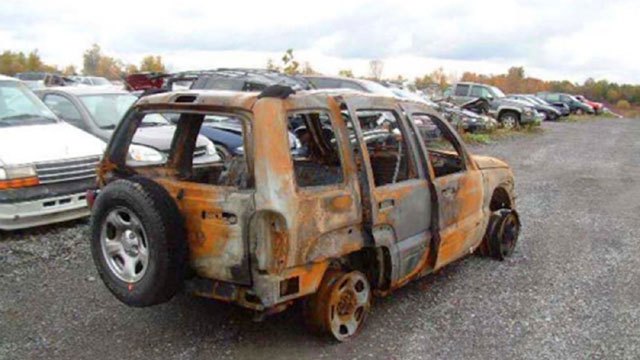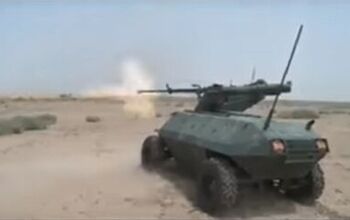Balls Of Fire, Then And Now
Chrysler’s recent decision to snub a recent NHTSA recall request is big news. I need not restate the facts of the story, if you are a “car guy” and haven’t heard the sordid details, or noticed the dramatic photos of burned out Jeep Grand Cherokees and Liberties posted all over the internet in the past few days, you must live under a rock. With 2.7 million vehicles involved the costs of conducting such a recall would be staggering but, ultimately, inaction may cost the company even more money if consumers lose confidence in the brand.
Because the root cause of the recall is said to involve rear-end collisions, ruptured fuel tanks, and the possibility of a death so gruesome that most of us shudder to even think about it, people are drawing a natural comparison between the current case and the Ford Pinto debacle of the 1970s. They appear the same on the surface but that’s only because, as much as I am loathe to admit it, the ‘70s were a long time ago and public awareness of the details of that earlier case has wasted away. In their rush to assert that history is repeating itself, people leap over a critical piece of the story that makes what happened almost 40 years ago much, much worse. Namely that Ford knew about the tendency of the Pinto to explode before the cars even left the factory, and, because it would cost an extra $11 per car to fix, they elected not to act.
The case against Ford was laid out in great detail by Mother Jones News in their October 1977 issue – view the original article – and it makes chilling reading. In a nutshell, that article states that the problems with the Pinto’s fuel tank became apparent during pre-production crash tests, but that Ford elected to go ahead with the car as designed because the tooling for the cars was already in place and because the overall cost to upgrade the car was deemed to be higher than the cost potential settlements to the families of those people unfortunate enough to be burned alive in an accident. Mother Jones backed up this assertion with a leaked Ford memo that revealed that an internal cost-benefit analysis had determined that the company’s average estimated payout in the event of a death caused by the defect would be $200,000. Crunching the numbers, then, was simple: $11 times X million cars over the car’s product cycle vs $200,000 times a projected 180 burn deaths per year. Chillingly logical, isn’t it?
Once Mother Jones blew the lid off this story, people got enraged and Pinto sales dropped precipitously. In 1977, seven full years after the car’s introduction, Ford finally made the required modifications and the car continued to appear on Ford lots where it sold in much smaller numbers until it finally went away in 1980. Today, the Ford Pinto has virtually vanished from the streets and, when they do appear, they seem more an oddity than a rolling death trap released upon the world through corporate duplicity.
I suppose that those whose lives have been effected by current “alleged” defect in Chrysler’s Jeeps will care little about the distinction I make between a vehicle that is determined after the fact to have a possibly deadly defect and one that left the factory with a similar defect with the full knowledge of the people running the program, but to me the difference is an important one. One is a mistake, the other is murder. One deserves to be prosecuted and the other made right. Both, however, need to be remembered in their correct context.
Even so, Chrysler should not ignore the lesson that Ford learned in the ensuing debacle. People don’t like to be burned alive in their cars. We don’t even like the thought of it. Over time we may forget the specific details, but we will remember the part about the burning. Don’t forget that. Make this right before its too late.
Thomas Kreutzer currently lives in Buffalo, New York with his wife and three children but has spent most of his adult life overseas. He has lived in Japan for 9 years, Jamaica for 2 and spent almost 5 years as a US Merchant Mariner serving primarily in the Pacific. A long time auto and motorcycle enthusiast he has pursued his hobbies whenever possible. He writes for any car website that will have him and enjoys public speaking. According to his wife, his favorite subject is himself.
More by Thomas Kreutzer
Latest Car Reviews
Read moreLatest Product Reviews
Read moreRecent Comments
- Jeff JMII--If I did not get my Maverick my next choice was a Santa Cruz. They are different but then they are both compact pickups the only real compact pickups on the market. I am glad to hear that the Santa Cruz will have knobs and buttons on it for 2025 it would be good if they offered a hybrid as well. When I looked at both trucks it was less about brand loyalty and more about price, size, and features. I have owned 2 gm made trucks in the past and liked both but gm does not make a true compact truck and neither does Ram, Toyota, or Nissan. The Maverick was the only Ford product that I wanted. If I wanted a larger truck I would have kept either my 99 S-10 extended cab with a 2.2 I-4 5 speed or my 08 Isuzu I-370 4 x 4 with the 3.7 I-5, tow package, heated leather seats, and other niceties and it road like a luxury vehicle. I believe the demand is there for other manufacturers to make compact pickups. The proposed hybrid Toyota Stout would be a great truck. Subaru has experience making small trucks and they could make a very competitive compact truck and Subaru has a great all wheel drive system. Chevy has a great compact pickup offered in South America called the Montana which gm could make in North America and offered in the US and Canada. Ram has a great little compact truck offered in South America as well. Compact trucks are a great vehicle for those who want an open bed for hauling but what a smaller more affordable efficient practical vehicle.
- Groza George I don’t care about GM’s anything. They have not had anything of interest or of reasonable quality in a generation and now solely stay on business to provide UAW retirement while they slowly move production to Mexico.
- Arthur Dailey We have a lease coming due in October and no intention of buying the vehicle when the lease is up.Trying to decide on a replacement vehicle our preferences are the Maverick, Subaru Forester and Mazda CX-5 or CX-30.Unfortunately both the Maverick and Subaru are thin on the ground. Would prefer a Maverick with the hybrid, but the wife has 2 'must haves' those being heated seats and blind spot monitoring. That requires a factory order on the Maverick bringing Canadian price in the mid $40k range, and a delivery time of TBD. For the Subaru it looks like we would have to go up 2 trim levels to get those and that also puts it into the mid $40k range.Therefore are contemplating take another 2 or 3 year lease. Hoping that vehicle supply and prices stabilize and purchasing a hybrid or electric when that lease expires. By then we will both be retired, so that vehicle could be a 'forever car'. And an increased 'carbon tax' just kicked in this week in most of Canada. Prices are currently $1.72 per litre. Which according to my rough calculations is approximately $5.00 per gallon in US currency.Any recommendations would be welcomed.
- Eric Wait! They're moving? Mexico??!!
- GrumpyOldMan All modern road vehicles have tachometers in RPM X 1000. I've often wondered if that is a nanny-state regulation to prevent drivers from confusing it with the speedometer. If so, the Ford retro gauges would appear to be illegal.


































Comments
Join the conversation
They did a Pinto styled recall on my 1977 Chevrolet Chevette. Added a plastic shield between the fuel tank and rear differential. I wonder if it was a proactive fix or they had as many fires as Ford.
Well said Thomas . Driving is dangerous no matter how you look at it ~ I was waiting at a red light on my Moto in 2008 , 04:30 when I was rear ended by a gypsy cab and nearly killed ~ it just happens sometimes . Although I own several Mercedes W-123s , I vastly prefer driving my '69 Chevy C/10 pickup or 1959 Metropolitan Nash Fixed Head Coupe everywhere I go , including Death Valley etc. Both are DEATH TRAPS but . life is uncertain , instead of living in a cocoon and crying myself to sleep , I embrace life and if I die , so be it . You alls might want to read up on what actually happens when you " burn to death " because you don't ~ you suffocate after the hot gasses & air burn away the bronchial matter in your lungs.... For real fun , look at the old safety test films of GM pickups being center punched with the in cab's fuel tank full of red dyed fuel ~ scarier than anything I've ever experienced but I still drive it daily . -Nate